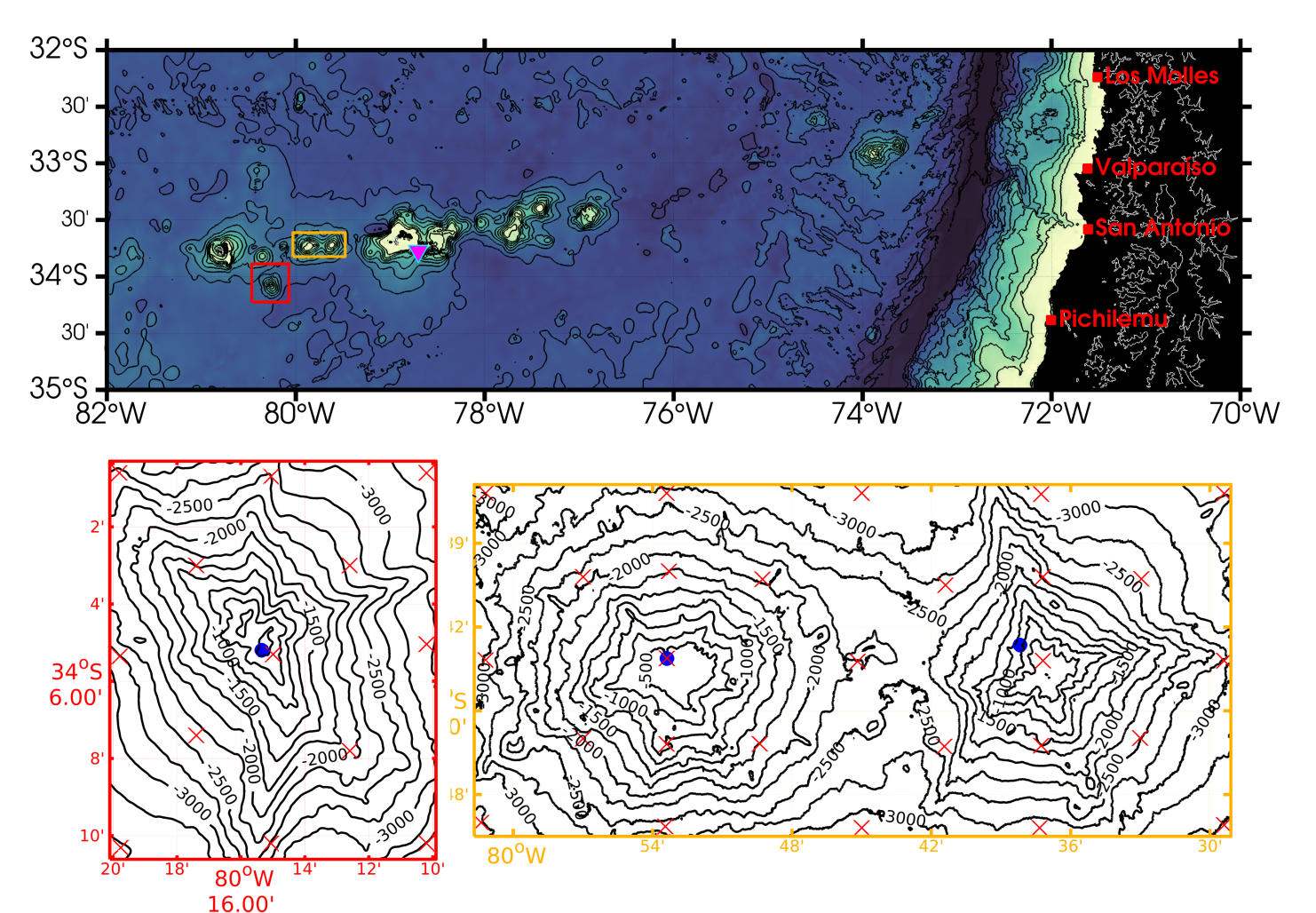Ph.D. Program in Oceanography and Global Change at the Canary Islands, Spain
Off central Chile the Juan Fernandez Ridge, a chain of topographical elevations over the seabed in the Eastern South Pacific (~33-35°S, 76-81°W), due to the fragility of its marine ecosystems was recently declared a Coastal Marine Protected Area of Multiple Uses. Given its location, the subsurface strata of the water column at the Juan Fernandez Ridge (200-450 m depth) is influenced by westernmost extension of the Oxygen Minimum Zone, with dissolved oxygen concentrations ranging from 1 to 4 ml/L. Hence, benthic and epipelagic fauna around the tallest seamounts and islands of this submarine ridge are exposed to this low dissolved oxygen concentrations water and also to its high variability. Here, using the first microstructure measurements and CTDO information gathered during a spring cruise in 2015 over two seamounts of the Juan Fernandez Ridge, together with moored ADCP records at the slope of a nearby island (Robinson Crusoe), the dissolved oxygen spatial and temporal variability ranging from semidiurnal to synoptic fluctuations was explored. To describe the oceanographic context during this survey and to asses longer scale variability of the Oxygen Minimum Zone along this ridge (intraseasonal to seasonal variability),the data described above was complemented with global oceanographic atlas, Argo buoys, satellite, and atmospheric and oceanic re-analyses models information. Our results suggest that along the Juan Fernandez Ridge intrathermocline mesoscale eddies plays a significant role modulating the dissolved oxygen content of subsurface strata, establishing a link between the coastal waters off Chile with the oceanic waters over this ridge. Mesocale eddies impinging this region also promote variations on the stratification (1-2 standard deviations) and hence the intensity of mixing and dissolved oxygen fluxes. To understand how endemic marine ecosystem are coupled with these dynamics, future studies using in situ data and numerical simulations that adequately incorporate realistic diffusivity coefficients, such as the obtained in this study, are needed.




